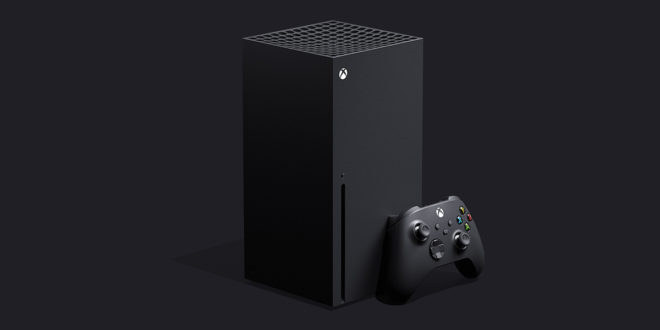Almost a full year before its release, Microsoft choose the Game Awards last night to reveal its monolith-like new console, previously known as Project Scarlett, the Xbox Series X. Which will release, as expected, for ‘Holiday 2020’.
The Game Awards has now cemented its place as one of the big beats of the gaming calendar. But it was still surprising that Microsoft should unveil the physical form of its new console this far before release.
For starters, there must be a few people still doing their last-minute Christmas shopping, who could be thrown by not only talk but the actual sight of a new device – especially one with such a confusing new naming convention. The trailer for Senua’s Saga would have reinforced the upcoming console’s power without actually kicking off the countdown for most consumers.
And that’s a long countdown now. Microsoft has set itself upon an 11-month run-in for the new hardware, longer than any we have seen before, with both previous generations being revealed in May for a six-month marketing campaign.
Now, even if Microsoft decides to pull the trigger early, and say translates that ‘Holiday 2020’ date into an early October release, rather than mid-November as usual, it’s still an incredibly long haul from now to then. A long haul in which Microsoft already had a significant hardware advantage through its Xbox One X.
So what gives?
Momentum for one. Microsoft currently has the upper hand over Sony. Its high-end hardware is better, xCloud is looking at the very least workable and useful, Game Pass offers huge value, and (to industry-followers at least) its executives are recognisable, personable and pop up regularly.
Sony undoubtedly has an incredible array of upcoming titles for PS5 and a couple of triple-A swansongs for PS4 in the form of Ghost of Tsushima and The Last of Us Part II. But in terms of momentum it’s actually Sony which is now looking forward to the refreshing pastures of a new console more than Microsoft.
So why has Microsoft moved first. Well, by putting its hardware out early, the company may be looking to blunt Sony’s own launch, after all it’s hardly big news that there’s a new PlayStation coming when your opposition has already shown off their box.
Microsoft may still like the marketing line of a ‘next generation’ but with Game Pass, excellent backwards compatibility and innumerable games as a service titles, in reality this will be a very different transition, one which may be entirely absent of exclusive titles (notably Senua’s Saga wasn’t billed as a Series X exclusive), as one generation really starts to blend into another like never before.
A further point is that (outward appearances aside) the Series X and PS5 are rumoured to be far more similar than any previous generation rivals. In which case, going early again seems like a good idea. And if the specs are near identical then Microsoft’s bold hardware design will be a useful point of difference.
But that’s just one part of it.
A major consideration is that this is unlikely to be the only next-generation Xbox, which a second less-powerful device rumoured as ‘Lockhart’. If Microsoft does double-down on its two hardware spec strategy, as has been heavily rumoured, then there’s still another Xbox design for it to reveal, for the mass-market, at some point next year. (Which would then make the unusual design of the Xbox Series X make a lot more sense, as it’s not for the typical, under the TV, mass market crowd).
A two-pronged console launch would be a very tricky beast to manage, after all console consumers aren’t used to being told they’re buying a brand new console at launch, but it’s not the best one they could buy.
If Microsoft has decided that the price point of truly next-generation hardware is simply too high for many consumers to stomach, but that the Xbox One S must be retired asap (which it really must) then it will need time to talk its way through that potential labyrinth.
So expect Microsoft to have a very, very busy 2020.

 MCV/DEVELOP News, events, research and jobs from the games industry
MCV/DEVELOP News, events, research and jobs from the games industry




